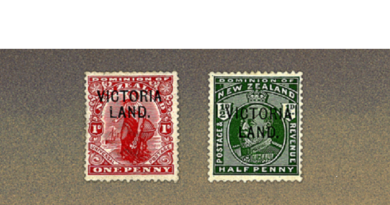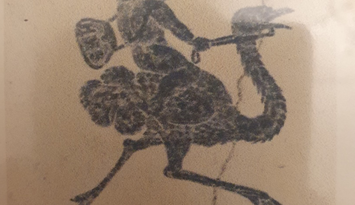The 1935 Saar Referendum
Society member Ann Beaver-Thomson provides this haunting postcard image of Nazi flags flying in victory after the Saar Referendum in 1935.

The Nazi flags are prominent on this postcard sent on 18th February 1935, 36 days after the Saar referendum, using a 90 cent (French currency) definitive with a view of the Saarlouis fortifications, issued 20/04/32.

On the postcard, Captain Godfrey of the Essex Regiment intriguingly writes to Low Farm, Barrow on Humber “ I was very pleased to see your letter sent to my wife. I hope to come & see you soon. We arrive back in England on 20’ Feb. Yours Captain Godfrey”
Ann inquisitively asks “Is there something hidden here?”
Background to the Saar Referendum.
At the end of World War I, the Saar was separated from Germany and administered by the League of Nations. France was given control of the Saar’s coal mines. After 15 years of administration, a referendum was scheduled. Towards the end of 1934, the League of Nations Council decided that a peace keeping force would be necessary in the plebiscite period. The German & French governments both agreed to an international force entering the Saar and in December 1934, this was unanimously agreed by the council.
Britain (1,500 troops), represented by the Essex Regiment and the First Battalion of the East Lancashire Regiment, Italy (1,300), Sweden (260) and the Netherlands (250) agreed to provide troops for the 3,300-strong International Force in the Saar. Troops patrolled, but did not police the Saar. They were not to respond except to emergencies and at the request of local authorities. In fact, there was little or no violence during the plebiscite and the peacekeeping effort was regarded as a success.

When Adolf Hitler came to power in Germany, some of his opponents took refuge in the Saar, where they campaigned for the area to remain under the League, but the great majority of the people living there were German. Whilst communists and socialists supported a continuation of the League of Nations administration, and a delay in the plebiscite until after the Nazis were no longer in power in Germany. Roman Catholics were divided in regards to returning to German rule. Overall, there was deep rooted hostility to France.
To achieve victory in the referendum, there were allegations that the Nazis engaged in intimidation, “espionage, secret denunciations, kidnappings …, … interception of letters and telegrams, [and] listening-in to telephone conversations”, among other things. In response, the Saar Governing Commission had to issue several restrictive decrees to maintain public order”.
In November 1934, fearing armed intervention by France, the Nazi German government changed its tactics and moderated its approach. The wearing of German uniforms within a 25-mile zone along the Saar frontier was banned for a short period as were meetings, parades, and processions. Jakob Pirro, the Nazi leader in the Saar, told his followers to obey the strictest discipline and implemented harsh penalties for violations.
| Unification with Germany | Status Quo | Unification with France | |||
| 477,089 votes 90.73% | 46,613 votes 8.87% | 2,124 0.4% | |||
| Invalid votes 2,161 |
In the referendum, held on 13th January 1935, voters were asked whether the Saar should remain under League of Nations administration, return to Germany or become part of France. To the surprise of neutral observers as well as the Nazis themselves, over 90% voted in favour of reuniting with Germany. Every voting district saw at least 83% of voters support returning the Saar to German rule, and fewer than 1% of voters supported the annexation of the Saar by France.


